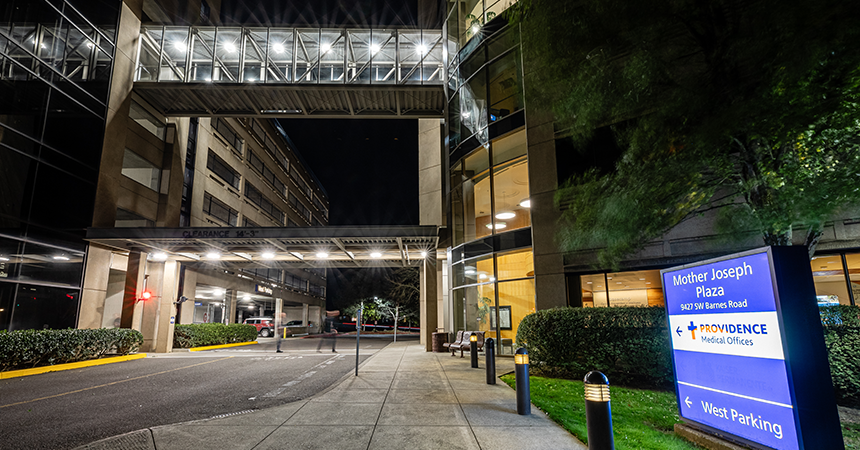The motivation was clear: Providence St. Vincent Medical Center had set a goal for its operations to be carbon negative by 2030.
One way to help the hospital move forward was by improving the lighting and adding lighting controls in parking structures, which would cut its energy use and lower its maintenance costs.
“We all approach this from the standpoint that replacing the lighting with LEDs is going to save us a lot of electricity, fewer emissions, lower utility bills, etc.,” says Andrew Mason, director of facilities at Providence St. Vincent. But such a massive project would need a correspondingly large budget.
Thanks to incentives worth nearly $219,000 from Energy Trust of Oregon, upgrading three of the parking garages became a goal within reach.
Providence worked closely with several trusted trade ally contractors. Extra Effort Consulting & Supply designed all aspects of the project and supplied all the necessary equipment. Tice Electric was responsible for the installation, which included:
- Replacing 1,200 high-pressure sodium metal-halide overhead fixtures with new LED fixtures and adding luminaire-level lighting controls
- Replacing 175 fluorescent stairwell lights with new LED lights and adding luminaire-level lighting controls
- Replacing 550 linear fluorescent lamps with tubular LED lamps
- Retrofitting 74 rooftop pole lights with LED kits
- Replacing 16 rooftop FAA-rated aviation obstruction lights with new FAA-Rated LED fixtures
- Retrofitting 24 illuminated directional signs with LED systems
- For the three structures combined, Providence St. Vincent will save an estimated 1.5 million kilowatt hours a year.
And yet, upgrades almost didn’t happen.
Now or never
“We were going into a bit of a budget crunch,” Mason recalls, thinking back to early 2022 when they proposed the idea. “A lot of projects were getting cancelled, and the Energy Trust incentives were in jeopardy. It was like, ‘If we don’t do this now and we postpone it, we’re going to lose this level of incentive.’
“It was hundreds of thousands of dollars in incentives that were at risk. We used that as a lever to keep the project rolling forward with our own finance people. It probably would have been shelved if the incentives hadn’t been there.”
It wasn’t the first time Providence St. Vincent has worked with Energy Trust, and it’s unlikely to be the last. “This is just one example of a number of projects we do with Energy Trust’s support,” Mason says. “Working with them is extremely smooth. We’ve done enough with them that we have the process down. It just flows.”
A remarkable change
To Mason, the benefits of the lighting project seemed straightforward at the start. But then, as the expression goes, seeing was believing: “The quality of the lighting is incredible.”
How much of a difference did it make?
“We got a lot of compliments when they first started swapping the lights (and controls) out about how much easier people felt going out there,” Mason says of the parking structures.
With the old lights, it was common for patients and visitors, especially older adults, to lose track of their cars because they couldn’t distinguish the vehicles’ paint colors in the dim lights of parking garage.
The Color Rendering Index (CRI) measures how natural colors appear under artificial light when compared to sunlight. On a scale of 0 to 100, 100 is perfect. Sodium lighting — which the garages had before the upgrades — is below 80. It’s considered poor.
“You might have a garage where you’ve got a blue car parked next to a green car and from 20 feet away, you can’t tell the difference between them,” Mason says. “The majority of our clients have limited vision to begin with, and they don’t want to be wandering all over a parking garage looking for their car they can’t find.”
The new LED fixtures in the garages checked in at 80+ on the CRI index, which is considered great. And adding luminaire-level lighting controls to some the fixtures increased efficiency even more!
And patients weren’t the only ones who benefitted, Mason says. The hospital’s staff works around the clock, so “having employees feel comfortable and safe to enter a well-lit garage at 3 a.m. is everything.”
There’s no question that the upgrades were worth it, he adds: “It’s a night and day difference.”
To see how Energy Trust can help your business, visit www.energytrust.org/incentives/existing-buildings-lighting/ or send us an email at lighting@energytrust.org.

